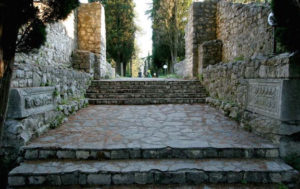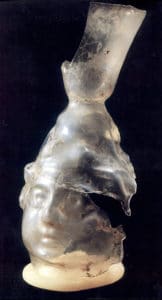
Following the split of the Empire between 337 and 395 AD, Dalmatia and Pannonia became parts of the Western Roman Empire. The region was conquered by the Ostrogoths in 455 AD. It subsequently changed hands between the Alans and the Huns. By the 6th century, Emperor Justinian had reconquered the area for the Byzantine Empire. Slavs overwhelmed the Balkans in the 6th and 7th centuries. Illyrian cultural traits were adopted by the South Slavs, as evidenced in certain customs and traditions, placenames, etc.
From 8th century BC, Illyrian tribes evolved into kingdoms.
In the 4th century BC, the first invasion of Celts is recorded.
Middle Ages:
The Early Slavs raided the Western Balkans, including Bosnia, in the 6th and early 7th century (amid the Migration Period), and were composed of small tribal units drawn from a single Slavic confederation known to the Byzantines as the Sclaveni. Tribes recorded by the ethnonyms of “Serb” and “Croat” are described as a second, latter, migration of different people during the second quarter of the 7th century who do not seem to have been particularly numerous; these early “Serb” and “Croat” tribes, whose exact identity is subject to scholarly debate, came to predominate over the Slavs in the neighboring regions. The bulk of Bosnia proper, however, appears to have been a territory between Serb and Croat rule and is not enumerated as one of the regions settled by those tribes.

Bosnia is first mentioned as a land (horion Bosona) in Byzantine Emperor Constantine Porphyrogenitus’ De Administrando Imperio in the mid 10th century, at the end of a chapter (Chap. 32) entitled Of the Serbs and the country in which they now dwell. This has been scholarly interpreted in several ways and used especially by the Serb national ideologists to prove Bosnia as originally a “Serb” land. Other scholars have asserted the inclusion of Bosnia into Chapter 32 to merely be the result of Serbian Grand Duke Časlav’s temporary rule over Bosnia at the time, while also pointing out Porphyrogenitus does not say anywhere explicitly that Bosnia is a “Serb land”. In fact, the very translation of the critical sentence where the word Bosona (Bosnia) appears is subject to varying interpretation.
In time, Bosnia formed a unit under its own ruler, who called himself Bosnian. Bosnia, along with other territories, became part of Duklja in the 11th century, although it retained its own nobility and institutions.
In the High Middle Ages political circumstance led to the area being contested between the Kingdom of Hungary and the Byzantine Empire.
Bosnian history from then until the early 14th century was marked by a power struggle between the Šubić and Kotromanić families. This conflict came to an end in 1322, when Stephen II Kotromanić became Ban. By the time of his death in 1353, he was successful in annexing territories to the north and west, as well as Zahumlje and parts of Dalmatia. He was succeeded by his ambitious nephew Tvrtko who, following a prolonged struggle with nobility and inter-family strife, gained full control of the country in 1367. By the year 1377, Bosnia was elevated into a kingdom with the coronation of Tvrtko as the first Bosnian King in Mile near Visoko in the Bosnian heartland.
